The affiliation between sexual satisfaction and the cultural asset of a hobby room, why mathematicians often tend to commit suicide, how the headquarters of the pirate party should be built – notions such as these are heavily discussed by architects and product designers, Gunnar Rönsch and Stephen Molloy. The founders of Fundamental Group not only share a business, but also for the past seven years, their private home. Both home and office are located under the same roof in Berlin-Mitte.
One would think that such a symbolic model for communal living and working would contain its obvious benefits for creative individuals. However, Stephen and Gunnar reveal their working secret. While at times Gunnar might reveal his fear of failure, simultaneously, Stephen – the optimist – counters this with his fear of success. This tension acts as their underlying strength, propelling them onwards and upwards in the fields of architecture, design and mathematics. Ultimately, together they are primarily concerned with the possible transformation of their partnership, which at the present moment appears to be quite perfect.
Their apartment is a Villa Villekulla-esque structure that houses a range of intriguing mathematical design objects, fading GDR posters that line the corridor walls, and a bedroom that appears like Spitzweg’s iconic poor poet painting. Meanwhile assorted physical testimonies of an enduring friendship are littered throughout.
This portrait is the second episode of our collaboration with Design Made In Germany. Have a look at their curation here.



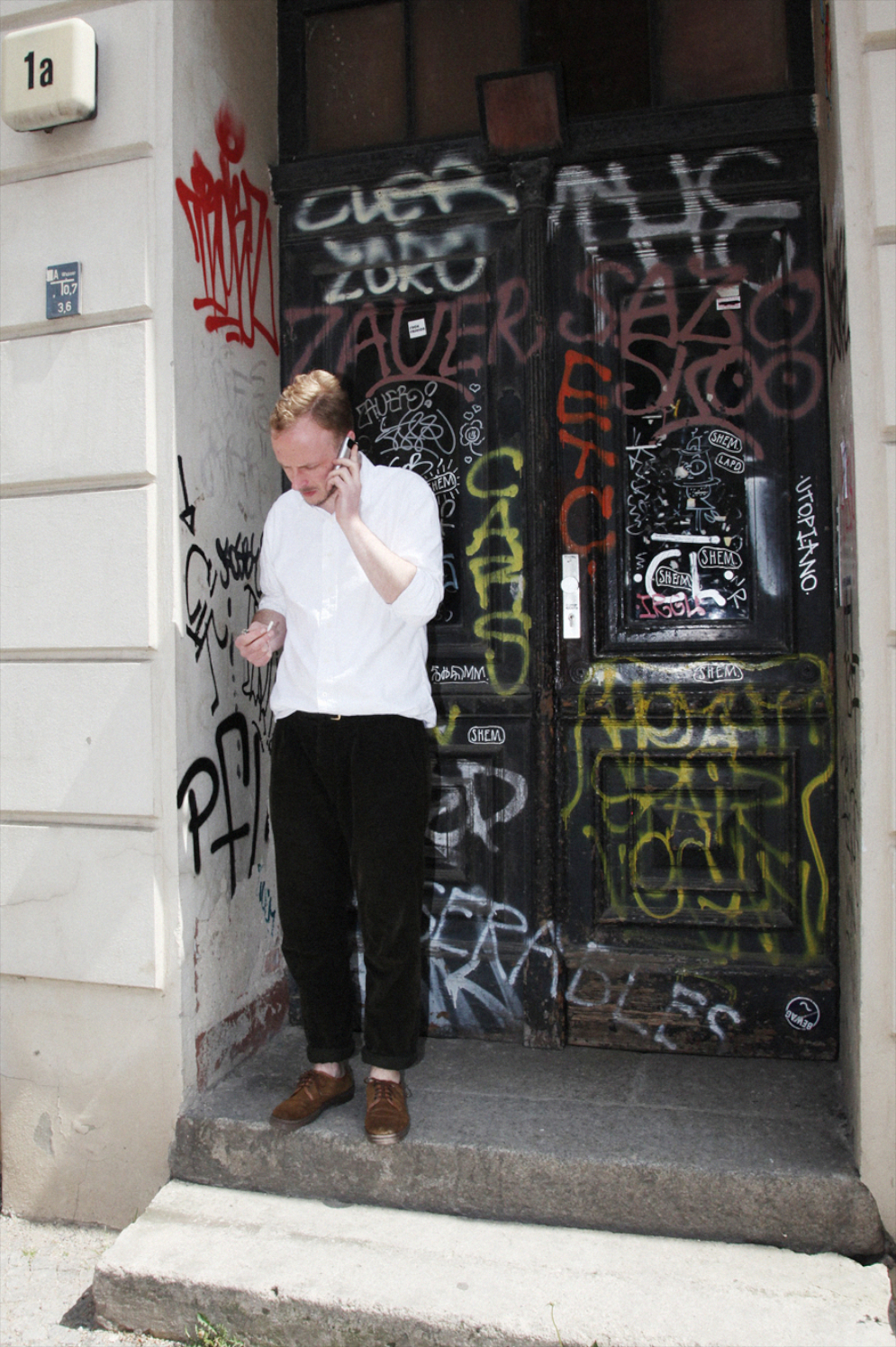
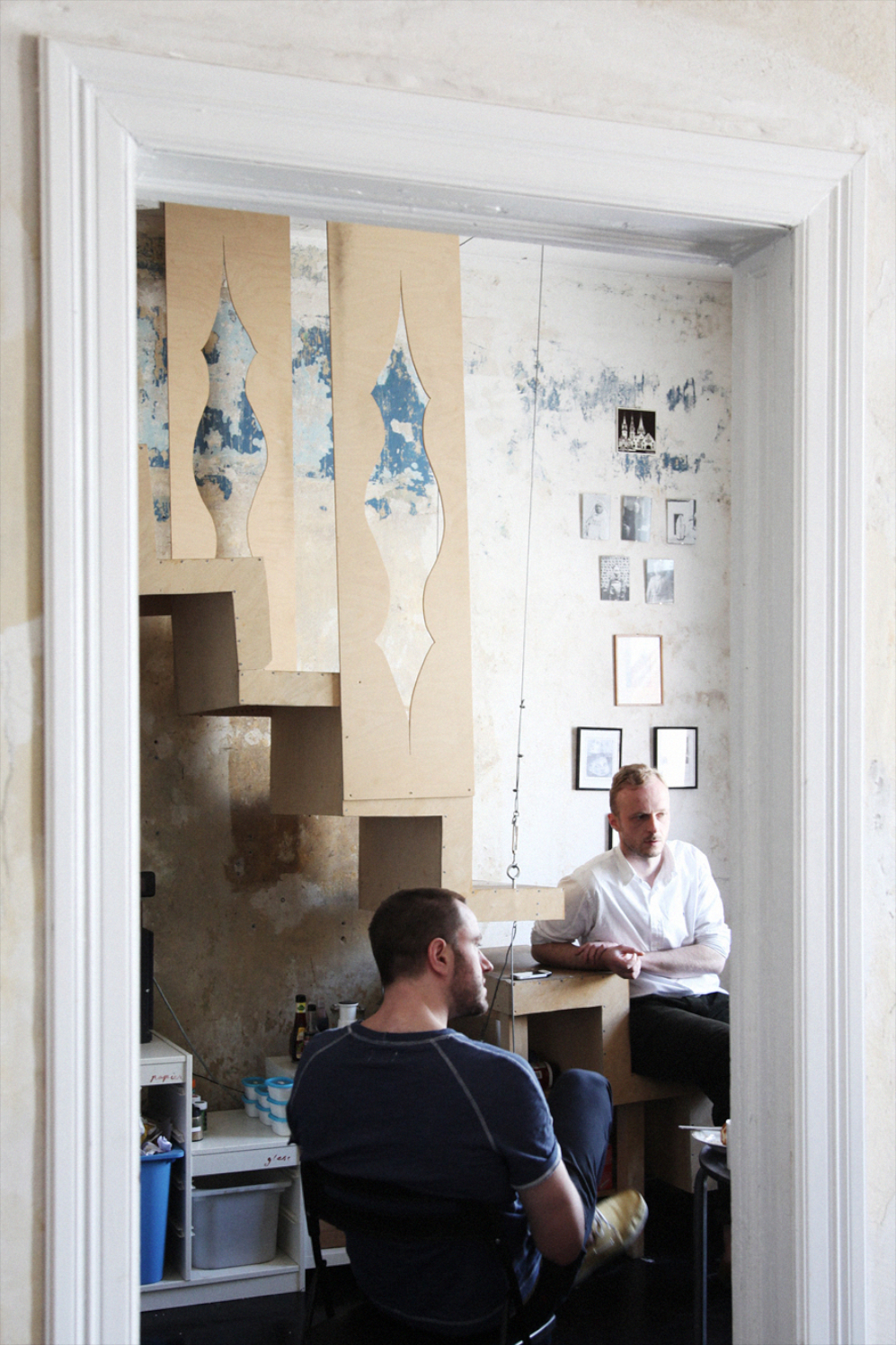




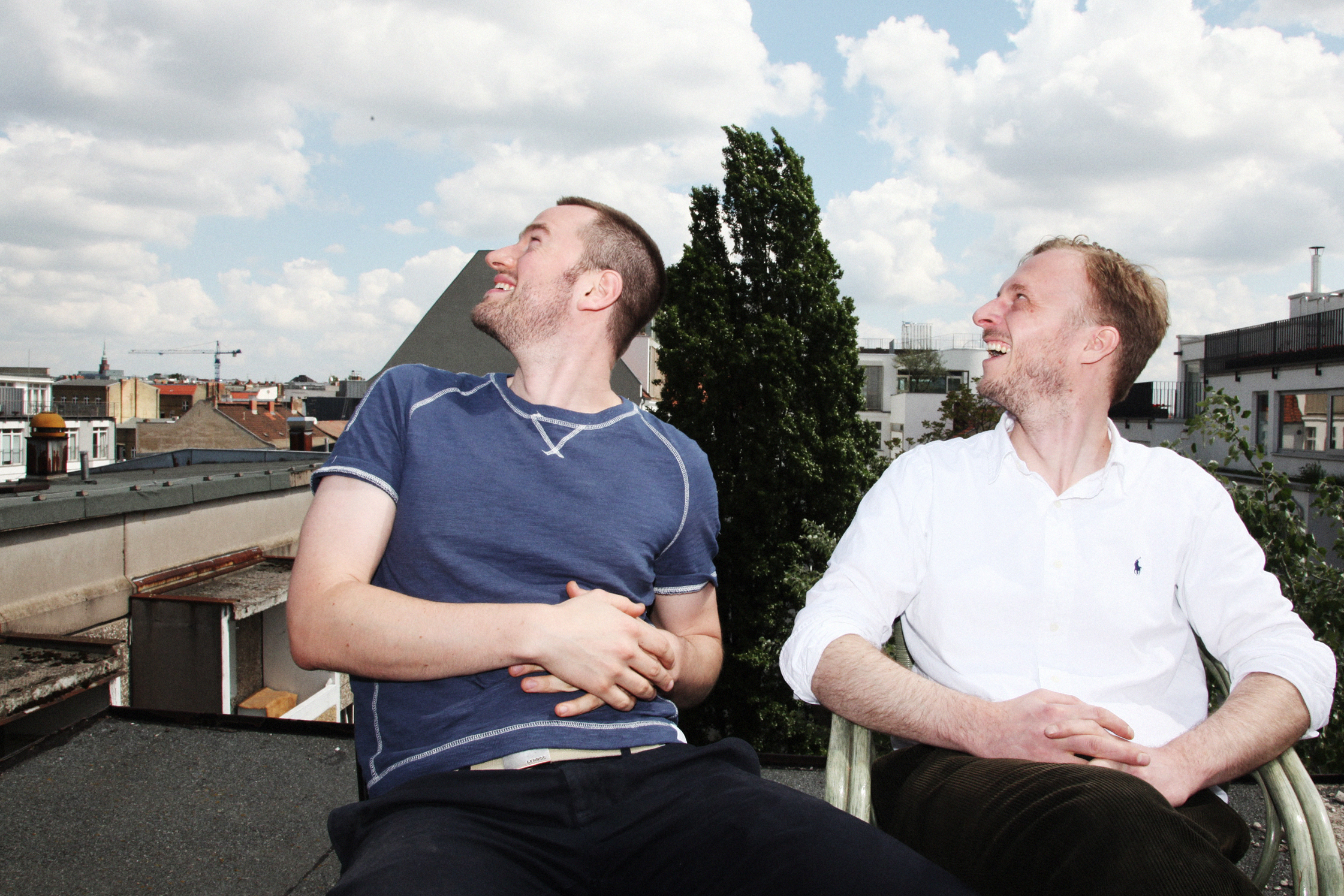
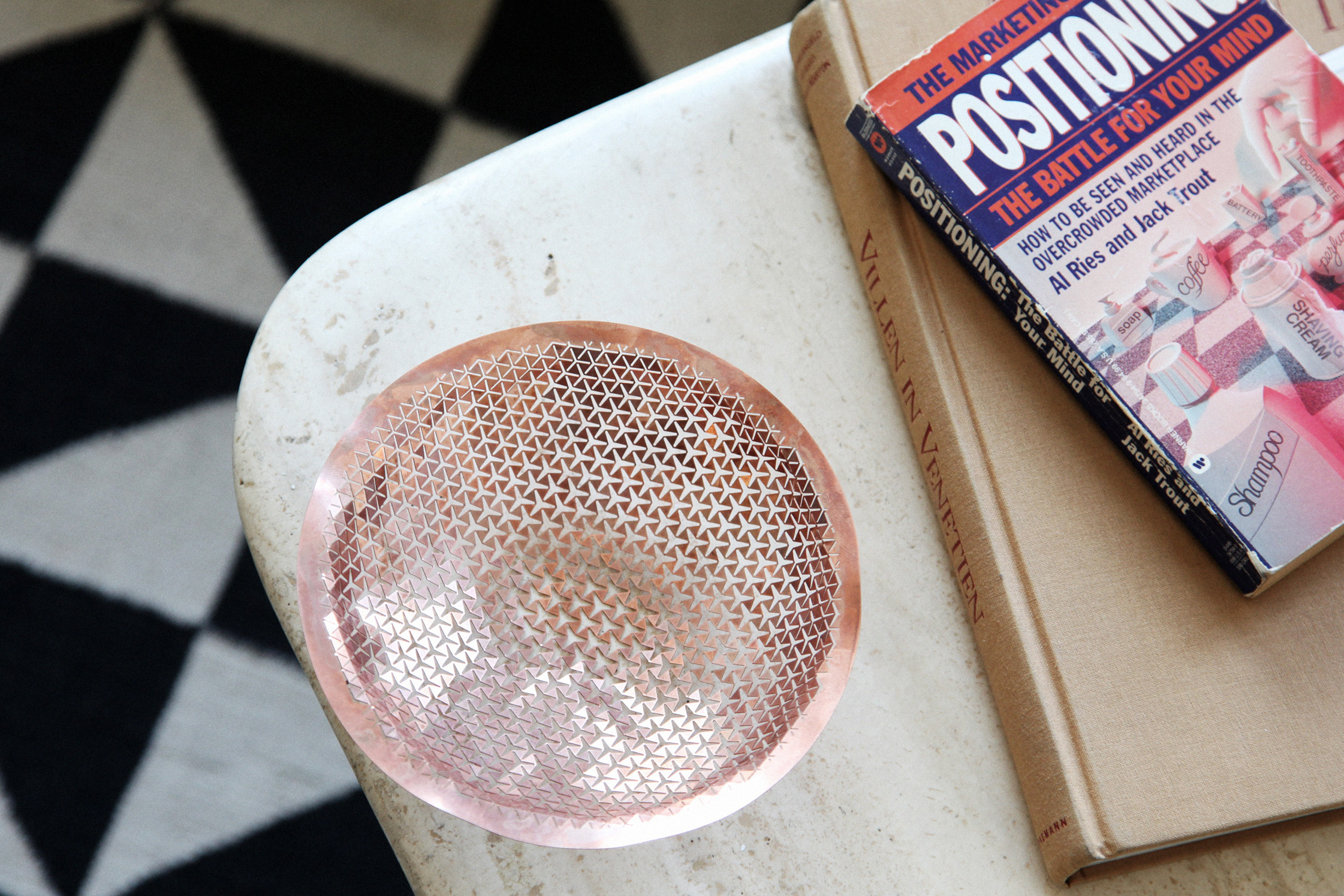
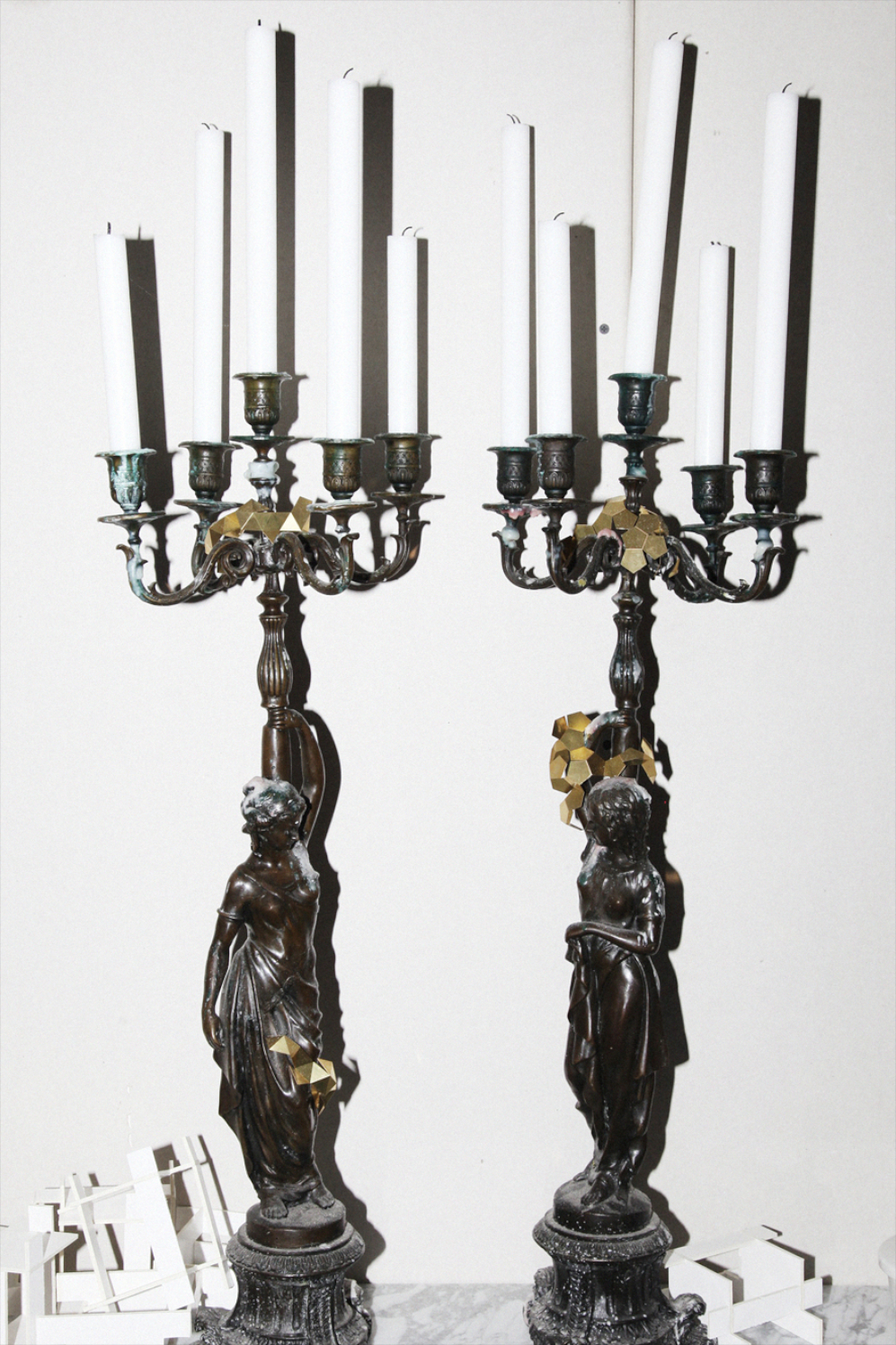

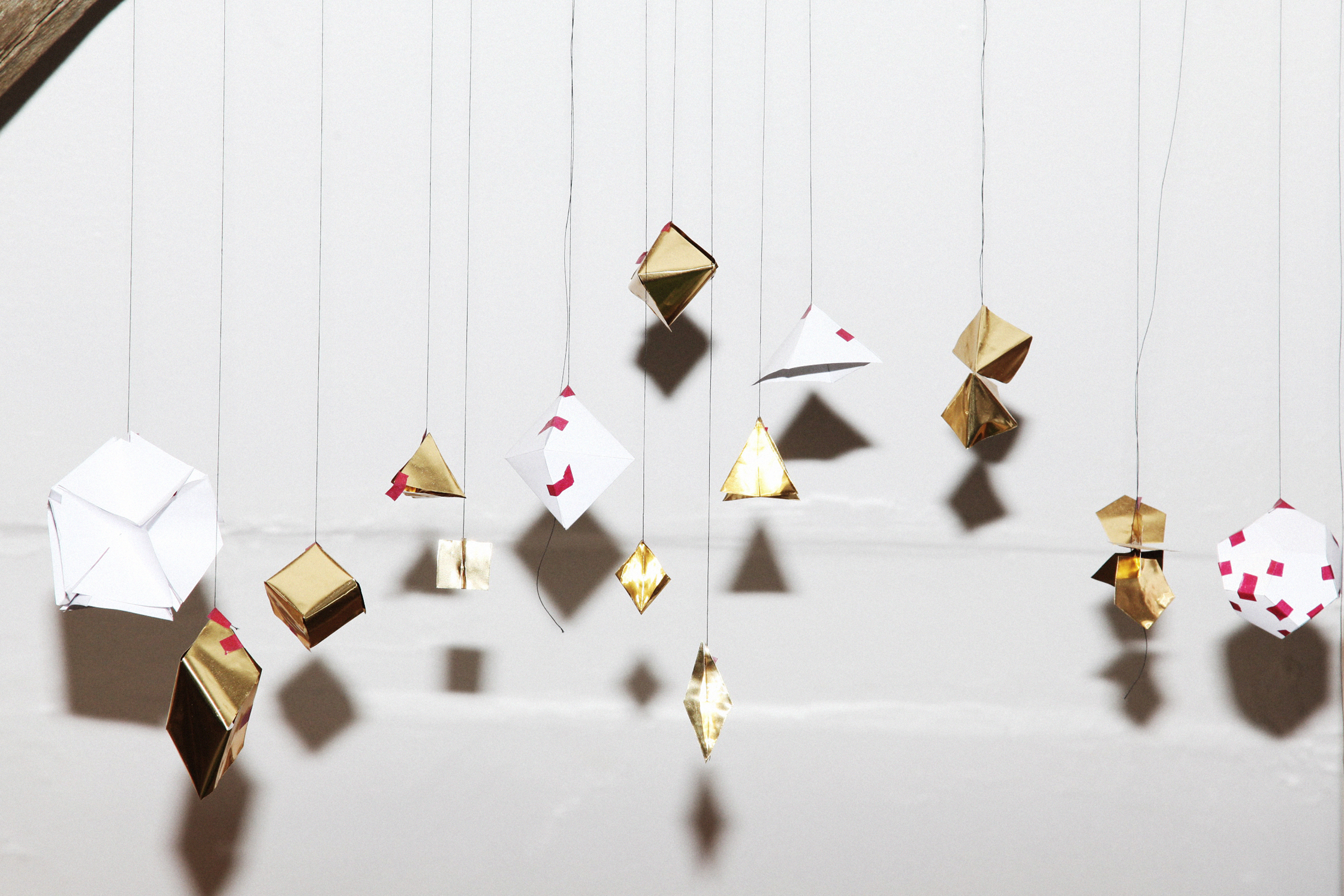





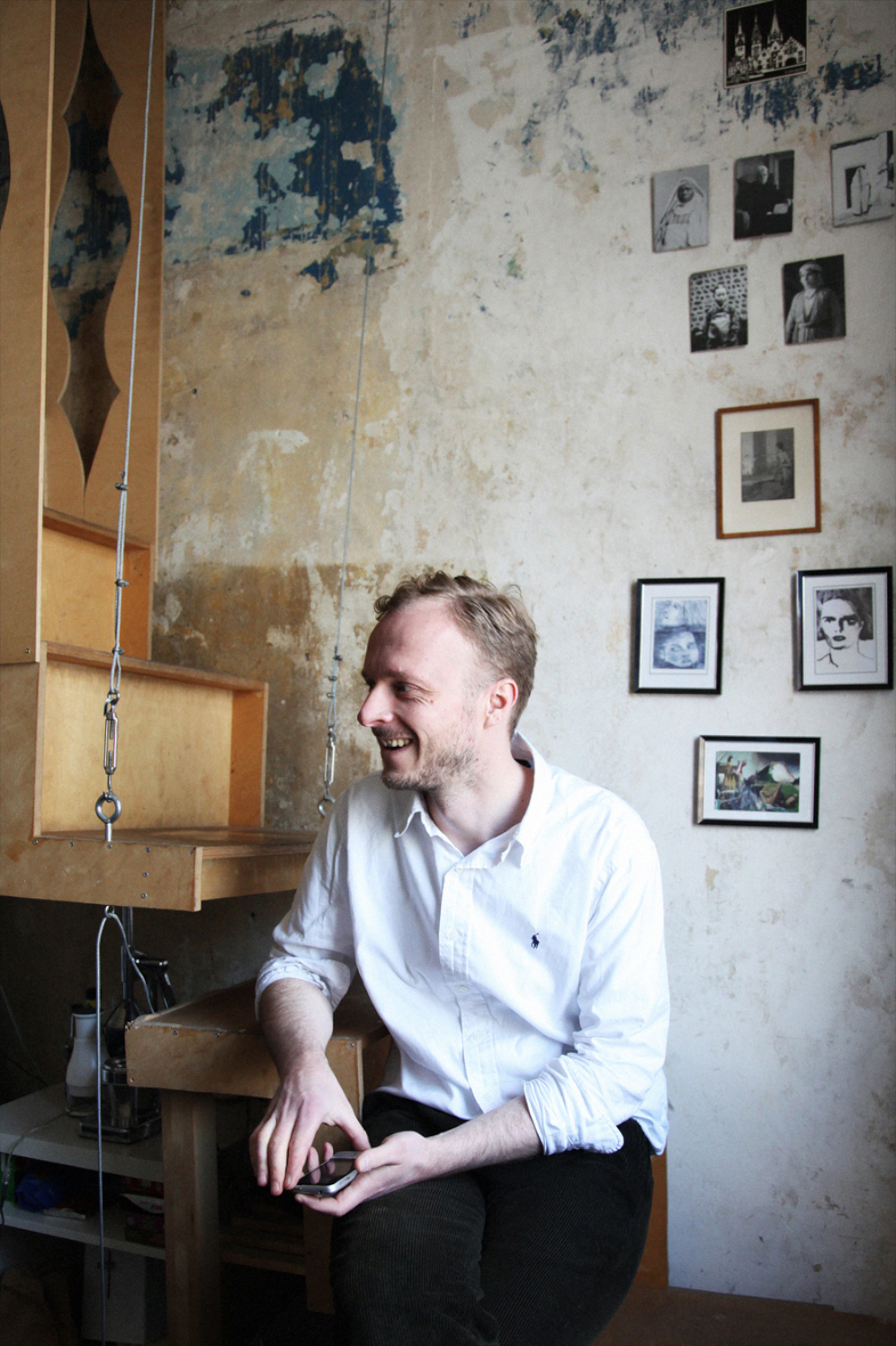











How did you connect as friends and business partners?
Stephen: We were studying at the University of the Arts Berlin (UdK) architecture and both of us were tutors for two different professors who were competitors. Consequently, we primarily recognized each other as opponents. But we had a common friend, Tom. During the diploma phase, Tom would consecutively catch up with Gunnar and myself for lunch in the cafeteria. After a while we realized that we didn’t dislike each other that much. Things followed step by step. In 2006, after the diploma was completed, Gunnar moved into my apartment. Together we renovated the entire place. We made some big changes and moved the bedroom and kitchen. Basically that was our very first project together, during which I also realized that Gunnar was someone I could work with.
Stephan, you used to work at Graft, and Gunnar worked at ‘VW+BS’ in London, and ‘LOHA Architects’ in LA. They are all extremely respected companies within the field of architecture. What did you gather from working there?
Stephen: Graft was an incredible place. It is managed by three people so I learned what it meant to have an exchange with partners, especially during heated phases of a project. In moments like that it is just like a football team during a game. People are screaming at each other from all sides, and the result has to be completed in 90 minutes. All this aggression obviously is not meant in a mean way, but rather serves to push something forward. During this intense phase, there is definitely pain and suffering. But in each bubble there is a certain acceptance for brutality, as respect always rules.
Is Berlin a good place for a young architecture office?
Stephen: In Berlin there are only a limited number of small jobs. Big interior construction developments and the construction of large-scale residences and companies dominate the landscape. Domestic sized jobs for a single-family home with a budget spanning 0.5 to 4 million are extremely rare. However, this is the exact budget range that our small office deals with. Just recently we were very fortunate to receive a project that lies within this price range. This enables us to work our way up in regards to performance capacity. A very important but extremely difficult task.
What is the emphasis of architecture and product design?
Gunnar: It’s especially hard to land exciting projects in the beginning. That is how we arrived at product design. We simply utilized our architectural skills and went for a smaller scale. In the end, the result is the same. The design pieces are the same. For example, a bowl with a lattice pattern is a material and construction study. This grid could equally be expanded upon and applied to a house or a hall. Obviously not the form, as it is adapted to the use of the bowl, however the general principles can be translated.
Are we getting closer to your vision of having mathematics merged in architecture?
Stephen: Mathematics is a system that attempts to be read through its results. It is based on logic that is deeply embedded within and one tries to carve out this logic with the help of mathematical or geometrical patterns.
Interesting angle. I immediately think of a rectilinear shape and the accuracy of fit in regards to mathematical equations. However, your home looks anything but accurate, almost as though it has been thrown together. It expresses such warmth, but simultaneously shows improvisation.
Stephen: Indirect lines are much more interesting in mathematics. Straight lines only define point A and point B. It quickly becomes boring.
Gunnar: Mathematics establishes rules – patterns. All of this can also be translated architectonically, for instance via the arrangements of windows. Creating repetition or a principle of arrangement establishes peace and security within architecture. It makes it easy for the user to understand.
I have to state Martin Luther here, who said: ‘medicine makes people ill, mathematics makes them sad, and theology makes them sinful.’
Stephen: Mathematicians supposedly have the highest suicide rate, especially logicians. I think it is similar to poetry. It is one of those careers where one can reach a career climax at a very young age. Only young minds can execute such performance. Most often, in these fields if you haven’t made it in your mid twenties then it’s over.
Gunnar: The more we understand the more we realize that we are lost. When I am older I definitely want to belong to a religion. I will need something that constantly tells me that everything will be alright. Better faith than knowledge.
That is quite a jump. From mathematics to faith…
Stephen: Something really interesting in the New Testament is the recurring theme of transformation: bread and water become something else. There is death but then follows reincarnation. Transformations behold promises, just as architecture – for instance a staircase. There is a wonderful moment of transformation when one gets from one level to the next. Architecture connects with religion and transcendence is then made possible through an object.
Religion literally conducts object worshipping…
Stephen: Within religious faith the power of objects and relicts is very much present, for example, the cross. It is an object fetish but simultaneously it is a conviction of the stupidity of humans. It is silly to believe in a haptic object. Even protestantism refuses it. Here the message is placed in the foreground. However, the intellectual apprehension is not satisfactory. For some reason, we need the representation of something tangible in form, even if it is just a placebo.
Back to mathematics. Is this the aspect that is fundamental – as in the office’s name?
Stephen: It is primarily a wordplay. It is a research area within mathematics, set theory, which describes complicated and ambiguous typologies. In German it also serves as a wordplay as a ‘fundament’ of a house, which is the foundation of every building. In English it is the dependence on fundamental thinking. Gunnar and I are obsessive individuals, perhaps also a bit dogmatic and possessed! In that sense we are, like all old architects, fundamentalists or dictators.
Your manifesto fits perfectly here as it possesses a dogmatic connotation, furthermore, joining a tradition within the history of architecture…
Stephen: I am definitely a traditionalist and am not particularly radical within my work. I consider what we do part of a 500 year-old tradition. We are the next chapter. For me, this does not include a break as such.
Is your architecture grounded within the past or does it relate to the future?
Gunnar: Just now Stephen is looking at projects older than 100 years as a reference for a project. I prefer taking ideas that are far away. The closer one approaches the present, the more treacherous the image becomes. Not everything current can be fully digested. Therefore it is fascinating to see what history has outlived. Notwithstanding, architecture is related to the future. Old concepts always stand with one foot in the grave. We have to establish programs for the future that correspond to the contemporary texture of urban and societal landscapes.
Does undertaking the canonization of architecture help here?
Stephen: Cultural society moves in cycles. We chose some phases within history that seem relevant to us: Italy’s Renaissance, Werkbund’s – the federation of architects, artists and builders – or the Arts and Crafts movement. These movements were founded in order to free themselves from failed industrial architecture and societal speed. Currently there is a similar rush of speed. Just think about the overwhelming retro movement. The information revolution has a similar impact on society, just like the industrial revolution. But we also try to trace out a childish fascination within our objects that we produce. It is based on the simple idea about gluing something together or creating something.
This brings us to your hobby room which serves as one of your most important motivations…
Gunnar: The hobby room is a completely undervalued idea and a great concept. One can be however they want to be in this space which challenges expectations. This sort of realm is necessary. One is permitted to become involved in an activity on an amatuer level without justification and form a new hobby.
Stephen: Humans no longer have hobbies as society increasingly expects them to find a job that serves as a complete fulfillment. The hobby room has been abandoned just like the acceptance of mistresses. This used to be tolerated as marriage wasn’t the place for sexual desires or romantic love. Nowadays we try to fulfill an idea in its entirety without room for anything else.
Can architecture ever become art? Does architecture, like the work of Jürgen Mayer H. belong in a gallery setting? Adolf Loos once said: ‘Only a very small part of architecture belongs to art: the tomb and the monument.’
Stephen: I intuitively enjoy the work of artists like Thomas Saraceno who tackle architecture in the broadest sense, but is clearly dedicated to the overall artistic field. The question of whether someone like Jürgen Mayer H. belongs within a gallery is the responsibility of the venue. It often involves the question of whether what is being exhibited is saleble. Personally, I think that a monument serves as a corporate communication of state power. It carries a clear assignment with previously agreed connotations. Nevertheless, I find the unique and personal architecture by Jürgen Mayer H. really inspiring and important. In addition to that, he is an important mentor for me.
Gunnar: I would be pretty angry if our societal relevance would solely exist within galleries and museums. We don’t make art. Conceptually it is about functionality.
What would be your dream assignment?
Stephen: I would love to build a church or a seniors residence. My grandmother has had dementia in the last two years of her life. It is interesting how life and thoughts re-arrange when someone has dementia. Perhaps at the end of all our failures architecture functions as a compensation. I consider it important to create a place where friends and acquaintances want to come visit.
Gunnar: I would love to build the headquarters of a political party. I think if a party would be better organized like pirates, especially space-wise, then it could be encouraging. Imagine if one would take a look at their network and online-based organization and coordinate it according to architecture.
You guys don’t just envision your perfect world, you live it! All this forward thinking seems very organic and mature.
Stephen: Gunnar and I never intended to live together for that long. I always thought that one of us or the office would relocate at one point. I am sure that one day we will look back at this phase and consider it as something beautiful due to its simplicity and tangibility.
Gunnar: Sometimes I am scared that this big dream will change. I tend to be a pessimist and I always assume the end of the world. I am not an euphoric person like Stephen.
And Stephen, are you not scared of anything?
Stephen: I am scared that our work will go uphill and in this rush, something will get lost. I rely on the growth of organization. Whatever came to existence here would be assigned with a bigger team in a different place. That is why we called ourselves Fundamental Group – stressing the word ‘group.’ This company was founded by us but should be expanded.
Gunnar and Stephen, it has been fascinating to hear your thoughts on the trends within society and your work in applying architecture, design and mathematics within this context in your various projects. To find out more, see the Fundamental Group website here.
This portrait is part of our ongoing collaboration with ZEIT Online who present a special curation of our pictures on their site. Have a look here.
Photography: Anna Rose
Interview & text: Juliet Kothe
